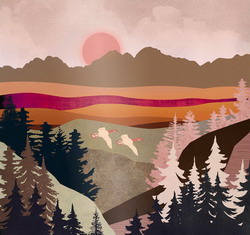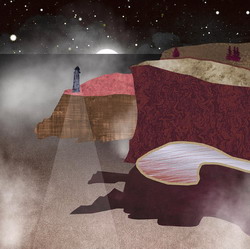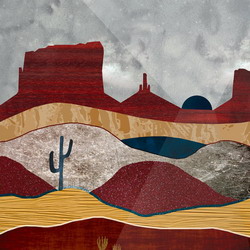How Much Has The Population In Your Area Changed?
There are roughly about 330 million people in the United States. We’ll get a more accurate number in this years full census. If you want to find out how much the population in your area has changed, I’ve found some cool tools for you.
Using Census Bureau data ESRI has made a slick interactive map that shows the population change by Census Tract across America from 2010 to 2020.
Areas with high population growth are colored in cyan, the greater the brighter. And areas with slow growth are in darker reds. Areas that saw a population decline are in bright red. The U.S. as a whole saw a population increase of 7.5% from 2010 to 2020.

How could this be helpful for financial independence? If part of your FI strategy is making money with real estate, data like this is invaluable. If you want to know where the growth is, you need to know where people are flocking to.
Real estate follows the same basic principles of supply and demand and you can use information like this to help pinpoint areas that will have a high demand for housing.
Other Population Change Maps
The folks at ESRI also have maps that visualize population migration by where people filed their taxes. The IRS records when people move from one state to another from their tax returns. The data in the ESRI maps is from 2015 – 2016, the most recent available. You can view inflow and outflow maps for each state, as well as the top 20 counties for each.
This is the population inflow to Idaho based on tax address changes from the IRS.

I’ve read that Idahoans have been complaining about the influx of people from California, and that looks to be accurate.
The Census Bureau itself has a cool tool called the flow mapper. You can click on any county and then click “migration flows” in the popup, or choose it from the pull down menu and the map will update to show the net migration in and out of that county from other counties. All affected counties will be highlighted either blue or orange depending on whether it was a migration to or from.
You an also choose the time frame. In this example I chose 2013-2017 migrations in and out of Louis County Virginia.

The Joint Center For Housing Studies at Harvard University has a nice interactive population change map for 2018. It has data at the county level and also shows net international migration numbers.
Another great map is the U.S. County-to-County Migration 2012-2016 which uses data from the American Community Survey to show the migration numbers between different counties. This likely won’t work well on your cell phone as it relies on mouse hover-overs to show data.
Simply hover over a county and it will highlight flow-lines showing migration to and from the county (incoming trips and outgoing trips). You can then hover over individual migration lines that connect to specific counties or cities. The migration lines are sized to represent the relative numbers of people moving in and out.
Business Insider used the same data from the Census Bureau to create a map showing net domestic migration per 1,000 people by county between 2016 and 2017.

United Van Lines shows where people moved in 2019 aggregated to the state level. Their data only shows states with more than 250 moves, but adds the age ranges, income level, and primary reasons for moving.
The University of Virginia has compiled data showing population projections for each state out to 2040. I couldn’t find information on their methodology on the site so take it as it is.
Lastly there’s this mesmerizing map from Vivid Maps. It plots U.S. population density numbers from 1790-2010 based on U.S. Census data and estimates. I told ya it was mesmerizing.
Geoarbitrage
If part of your financial independence or retirement strategy is Geoarbitrage, which means relocating to a generally lower cost of living area, then this data can help. Or, if like me you’re considering moving to a less crowded area this map will show you areas with declining population.
I’ve done lots of other geographic-based posts showing various aspects of money and finance from a location perspective. Be sure to check out my Geoarbitrage Resources Page that has tons of great tools to help you find your perfect location.
I hope you find these resources handy and I will continue to expose valuable tools that can help when deciding on a geoarbitrage strategy.










































cool maps. where you gonna live when all is said and done and you call it a day? as much as i have little use for snow and ice we’ll probably continue to tolerate it in the northeast, but maybe not buffalo.
You’re a sucker for punishment if you don’t like snow being where you are, builds character.
Where am I gonna live?… I don’t know. not in the DC area though, that’s for sure. Would love to have a place in the mountains and a place near or on an ocean. I’ve easily got enough scratch to pull it off, even if this downturn continues. It’s all in the timing….
I agree on character building especially climbing mountain peaks during an unexpected early whiteout. No wonder traffic has gotten so insane over last 10 years in Denver and the ski area towns. We have everything from mountains, alpine lakes, great culture…everything except oceans.
Your area has been transformed over the past 10 – 15 years. I go every year, sometimes twice, and I saw it happening. Crazy
Even after 25 years living here, I think it boasts a balanced mix of urban, suburban, leisure, social, outdoors, educational and cultural outlets with 4 seasons. Hard to find that elsewhere.
I agree, I love it there and have quite a few friends. If you’re into the climbing community we might even have friends in common. It’s on my list of possible landing sites 🙂
I don’t climb but I know a lot of friends that do through CMC, 14ers, hiking, SUP. Birds of a feather flock together. Your article inspired me to calculate exact population growth in CO (729,420 from 2010-2019). Yikes! Over 81K more annually. No wonder I am sitting in traffic longer with every year.
https://www.census.gov/quickfacts/fact/table/CO,lakewoodcitycolorado,glenwoodspringscitycolorado,US/EDU685218
Wow, over 700k people in ten years, that’s huge!
Interesting maps. Idaho is like Oregon 20 years ago. It’s affordable and not too crowded. Once our son is out of school, I’m not sure where we’d go. Probably split our time between CA and Thailand to care for our parents.
Yep, Idaho is like a tractor beam now. Prices will keep going up. And a life between CA and Thailand sounds pretty darn awesome 🙂
To what we call “the north shore” in Minnesota then for early retirement!
Nice place!
Great article and groovy tools. Spent some time yesterday messing around with them on the laptop. Timely, since I was curious about my new area. Looks like my new county’s grown by about 2300 people in 10 years, although shrinking in the area within it where we live. The Big City 70 miles away is growing faster than the national average which I figured.
Not surprised about the exodus from CA and I was aware of the the Idaho thing since we’re close by. It was a nice distraction from the madness for a few hours playing around.
Groovy, haha. You are part of the CA exodus!
Your blog is just a find for me. Super! Amazing information. Great cards. I will definitely share the blog with my colleagues!
Thank you!